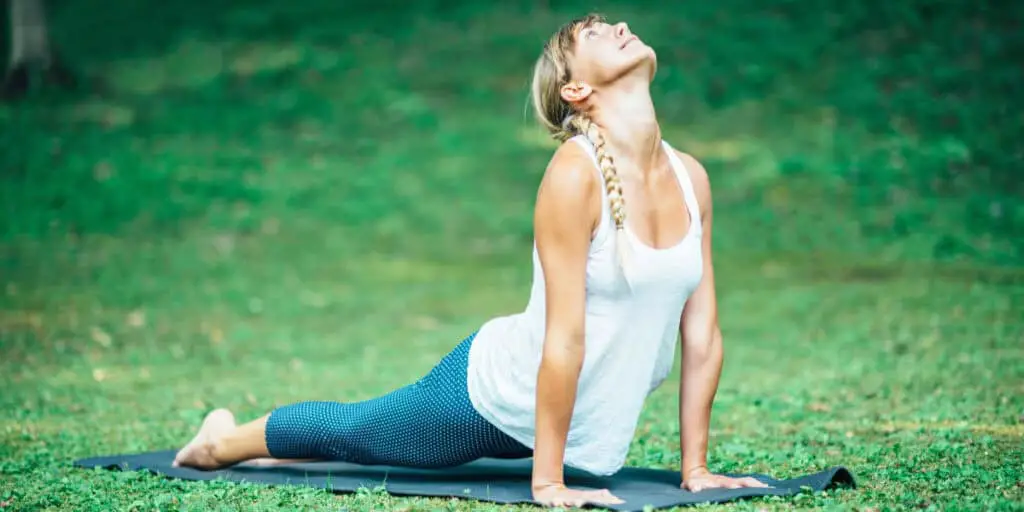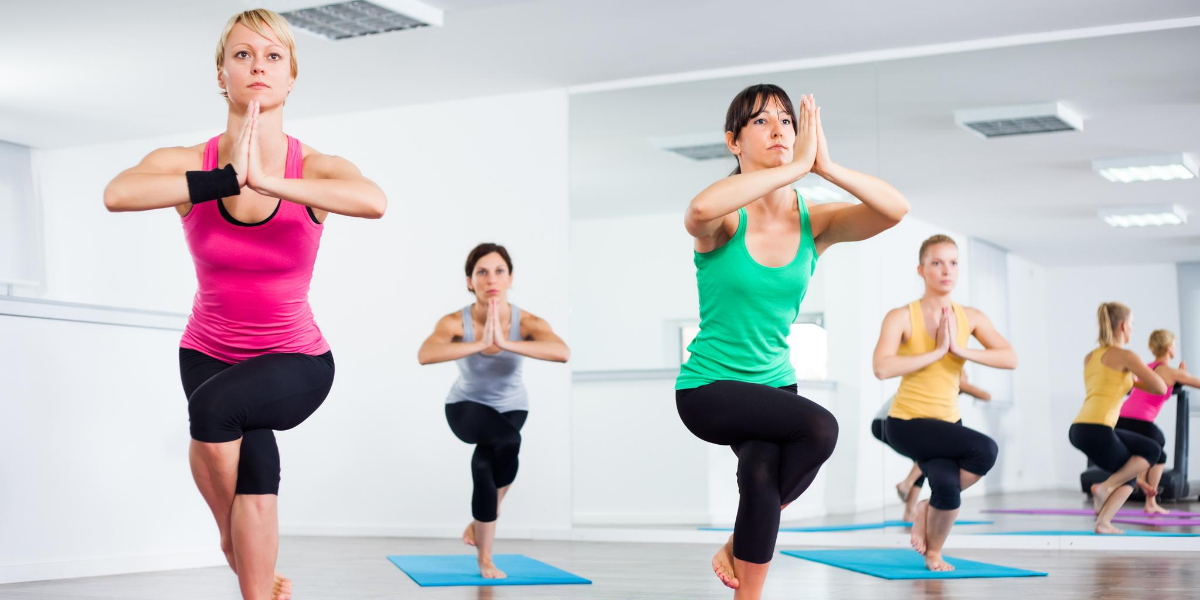If you’re looking to add some serious tone to your body, you need to up your exercise game. However, pushing your body too hard can lead to injury. So can you do Pilates and yoga every day?
You can do Pilates every day and yoga daily. Both these exercises are low impact and provide a full body workout that is great for toning muscles and improving flexibility. They also help in reducing stress levels and improving overall health.
Yoga and Pilates are both forms of exercise that work the whole body. They’re excellent for reducing stress, improving flexibility, and helping tone the muscles.
You don’t need any special equipment or classes to do these exercises; once you learn the basics, anyone can do them at home.
What are the benefits of yoga and Pilates?
A lot of people assume you should only do one or the other, and generally most people do tend to only do them separately, but there is nothing stopping you doing both and reaping the benefits.
Let’s take a look at the individual benefits:
| 5 Benefits of Pilates | 5 Benefits of Yoga |
| Strengthens Muscles Pilates strengthens muscles and improves muscle tone. This helps prevent injury and promotes overall health. | Improves Flexibility Yoga helps improve flexibility. Yoga poses stretch muscles and joints, allowing them to relax and lengthen. This improves range of motion and reduces pain. |
| Improves Balance Balance is essential for maintaining stability and preventing falls. Pilates teaches proper alignment and coordination of movement. | Increases Strength Yoga strengthens muscles and bones. Practising yoga regularly builds strength in the core and upper back. This makes it easier to perform everyday tasks without feeling tired or sore. |
| Reduces Back Pain Back pain affects millions of Americans every year. Pilates reduces stress on the spine and relieves tension in the back. | Reduces Stress Levels Stress affects our bodies physically and emotionally. Regular yoga practice relieves stress and anxiety. As a result, it boosts self-confidence and improves overall mood. |
| Helps Prevent Injury Injuries happen when our bodies aren’t properly aligned. Pilates helps improve posture and correct bad habits. | Promotes Balance Practising yoga helps us maintain balance. We learn to focus on our breathing and control our thoughts and emotions. This allows us to remain calm under difficult situations. |
| Increases Flexibility Flexibility is an important part of life. Pilates improves flexibility and prevents stiffness and soreness. | Helps Improve Concentration Concentration is essential for success in life. If we cannot concentrate, we may miss opportunities to succeed. By learning to meditate, we can develop concentration and achieve inner peace. |
There is a lot of overlap, doing both has the following benefits:
They Work Together Well
Both yoga and Pilates focus on stretching muscles and improving posture. Both exercises target specific areas of the body. Yoga focuses on strengthening core muscles; Pilates targets the back, shoulders, arms, and legs.
Combining these two workouts allows you to improve strength and flexibility in multiple muscle groups simultaneously. This makes each workout easier and more effective.
They Help With Balance
Being able to balance is an essential part of staying fit and maintaining a good quality of life. After all, if you don’t balance yourself properly, you may fall down and suffer an injury.
Yoga and Pilates both teach you how to maintain proper balance and by practising regularly, you’ll learn how to control your centre of gravity, which helps prevent falls and injuries.
They Improve Flexibility
Another aspect of life that can quickly deteriorate is flexibility. Flexibility is important because it allows us to move with ease and grace. It also keeps our muscles strong and healthy.
Practising yoga and Pilates will help increase your flexibility. These types of exercise are great at loosening up tight muscles and improving range of motion.
They Promote Better Posture
Poor posture can lead to neck and shoulder problems and is becoming more common as we spend an increasing amount of time working on computers and looking at mobile phones.
Regular practice of both can help undo the damage done and help prevent it occurring again.
They Can Be Done Anywhere
Whether you live in a big city or small town, you can practice yoga and Pilates anywhere. These workouts can be done indoors or outdoors.
They can be practised alone or with others. There are no equipment requirements.

They Promote Healthier Living
When you combine yoga and Pilates, it becomes much easier to incorporate healthier living habits into your life.
These workouts encourage you to eat better, drink water, and exercise more frequently.
Practising yoga and Pilates regularly encourages you to adopt a healthier lifestyle.
So, next time you feel tired, stressed, or unwell, give one of these workouts a try. You won’t regret it!
What are the different types of yoga and Pilates?
The terms yoga and Pilates are now used to cover a range of different styles that have branched out over the years.
There are many types of yoga, each one focusing on specific aspects of physical and spiritual wellness.
Here are five popular types of yoga:
Hatha Yoga: focuses on strengthening muscles and improving balance. This style of yoga is often combined with breathing exercises.
Ashtanga Yoga: emphasizes strength training and poses designed to stretch the spine and strengthen core muscles.
Vinyasa Flow Yoga: combines dynamic movement with breath control.
Iyengar Yoga: focuses on precise alignment and proper posture.
Hot/Bikram Yoga: involves heat and humidity.
In addition to these five types of yoga, there are several others such as Kundalini yoga, Yin yoga, and Kripalu yoga. Each of these styles offers unique benefits.
Let me hand you over to Emily Rowell, a yoga instructor, to provide a full explanation of each type.
Pilates also has variations, for example:
Mat Pilates
This form of Pilates is done on a mat. It’s ideal for beginners since it allows you to focus on proper alignment and breathing techniques.
Equipment Pilates
A variation of mat Pilates, we introduce extra challenge by adding in equipment such as balls, bars, and hand weights. Working harder allows us to further strengthen our core and improve our posture.
For further information check out: https://pilatesmovesyou.com/home-pilates-equipment-guide-everything-you-need-to-know-to-get-started/
And here is an example workout you can try at home.
Hot Pilates
As the name suggests, this version heats things up, doing Pilates classes in a room set to around 95°F (35°C), with humidity at 40%.
That’s not the only difference, check out https://pilatesmovesyou.com/is-hot-pilates-better-than-regular-pilates/
Reformer Pilates
This method uses a special piece of equipment called the Reformer. It’s the most expensive piece of equipment I’ve purchased, and it requires a lot of space, but I absolutely love it!
Regardless of your fitness level, please don’t attempt to use a reformer without gaining beginner level understanding of the basic concepts and moves in Pilates, and you should always seek to gain initial training from a qualified professional.
Final Thoughts
As an instructor who teaches regular Pilates classes I often find clients have, or plan to, also try yoga. That doesn’t surprise me, as you can see from the above there are a lot of similarities.
While most of my clients will tend to prefer and focus on one over the other, there are some who love to do both.
Fortunately there is no issue doing yoga and Pilates every day, if you have the time and energy!
Doing regular exercise is key to maintaining a healthy lifestyle; just remember that if you’re undertaking a new exercise routine be sure to seek professional advice to ensure you do so safely.




